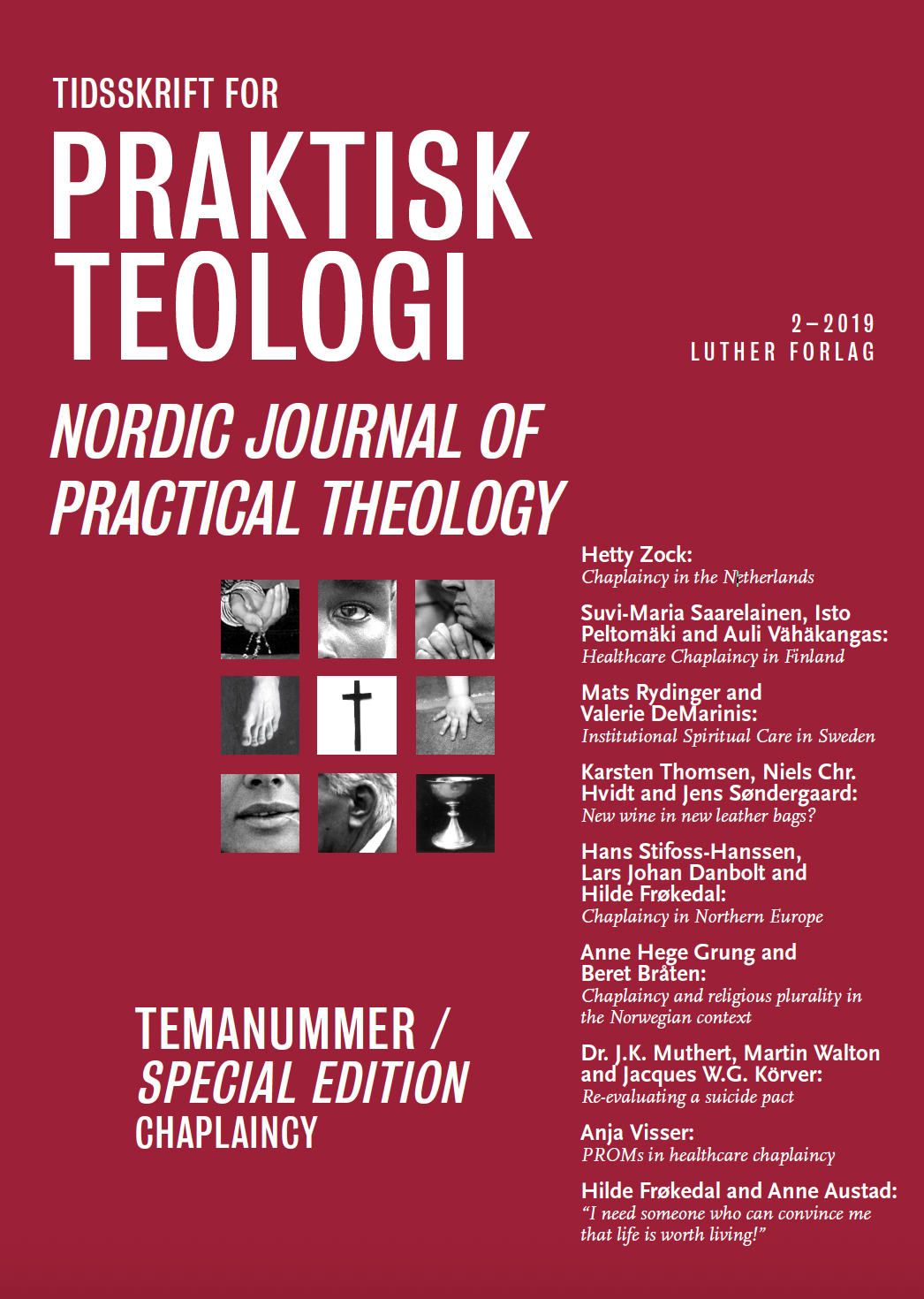Chaplaincy and religious plurality in the Norwegian context
DOI:
https://doi.org/10.48626/tpt.v36i2.5356Sammendrag
This article discusses chaplaincy as a professional capacity in a context of religious, demographic, and political changes. These changes are gradually converting chaplaincy services in Norway from a task that has traditionally been part of the work of the Church of Norway into more pluralistic services. We ask and discuss how pluralisation could challenge the professional paradigm of chaplaincy – with respect to both generic and specific aspects of these practices. This is done based on a sociological perspective questioning how chaplaincy is done in Norway from outside (by the institutions) and from within (from the point of view of chaplaincy and the people they are supposed to serve). Our empirical point of departure is our experiences in designing a master’s degree programme in order to contribute to building chaplaincy competence for students outside the Church of Norway – and interviews with hospital chaplains in Norway related to the Church of Norway on how they interpret their role as professionals in the hospital.





